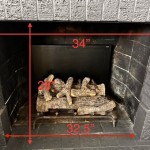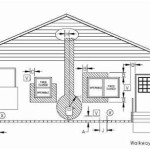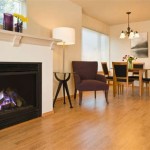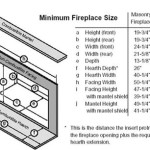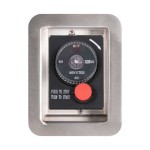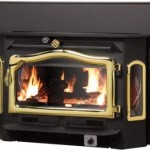Enhancing Fireplace Aesthetics: A Comprehensive Guide to Wood Trim
A fireplace serves as a focal point in many homes, offering warmth and aesthetic appeal. While the fire itself is a captivating element, the surrounding area provides an opportunity to enhance the overall design. Wood trim around a fireplace is a classic and versatile design choice that can elevate the room's style, complementing a range of architectural designs from traditional to contemporary. This article explores the various aspects of incorporating wood trim around a fireplace, including considerations for wood selection, design styles, installation, and long-term maintenance.
Wood Selection and Durability
The choice of wood significantly impacts the fireplace trim's appearance, durability, and overall cost. Different wood species offer varying characteristics, including color, grain patterns, and resistance to heat and moisture. Understanding these properties is crucial for selecting the appropriate wood for a fireplace surround.
Hardwoods such as oak, maple, and cherry are popular choices due to their strength and attractive grain patterns. Oak is known for its durability and distinctive grain, making it suitable for both rustic and formal designs. Maple offers a smoother, more subtle grain and is often chosen for contemporary styles. Cherry wood, with its rich reddish-brown hue, adds a touch of elegance and warmth to a fireplace surround.
Softwoods like pine and cedar are also viable options, particularly for budget-conscious homeowners. Pine is readily available and relatively inexpensive, but it is softer and more susceptible to dents and scratches than hardwoods. Cedar is naturally resistant to moisture and insects, making it a good choice for areas with high humidity. However, its distinct aroma might not be desirable for all homeowners.
Engineered wood products, such as medium-density fiberboard (MDF) and plywood, offer alternative options. MDF is a cost-effective choice that can be easily painted or veneered, providing a smooth and uniform surface. Plywood, made of layers of wood veneer glued together, offers greater strength and stability than solid wood in some applications. However, it is essential to ensure that any engineered wood product used near a fireplace is fire-resistant.
The selection of wood should also consider the existing décor and architectural style of the room. Matching the wood trim to existing moldings, furniture, and flooring creates a cohesive and harmonious design scheme. Contrasting wood tones can be used to create visual interest, but careful consideration is needed to ensure the contrasting elements complement each other effectively.
Design Styles and Aesthetic Considerations
Wood trim around a fireplace can be designed in various styles, ranging from simple and understated to elaborate and ornate. The design style should align with the overall aesthetic of the room and reflect the homeowner's personal preferences. Several established styles have become enduring favorites.
Traditional designs often incorporate intricate moldings, raised panels, and decorative carvings. These details add a sense of formality and elegance to the fireplace surround. Crown molding, fluted pilasters, and dentil trim are common elements in traditional fireplace designs. Darker wood tones, such as mahogany or walnut, are frequently used to enhance the traditional aesthetic.
Contemporary designs tend to be more streamlined and minimalist. Clean lines, simple shapes, and a lack of ornamentation characterize this style. Light-colored woods, such as maple or birch, are often preferred for contemporary fireplace surrounds. The focus is on highlighting the natural beauty of the wood grain rather than adding excessive decorative elements.
Rustic designs embrace the natural imperfections and textures of wood. Reclaimed wood, with its weathered appearance and unique character, is a popular choice for rustic fireplace surrounds. Rough-hewn beams, exposed knots, and distressed finishes add to the rustic charm. Stone accents are often incorporated to complement the wood trim and create a natural, earthy feel.
Transitional designs blend elements of traditional and contemporary styles. This approach allows for greater flexibility in terms of design choices. For example, a transitional fireplace surround might feature simple molding profiles paired with decorative accents or a combination of light and dark wood tones. The goal is to create a balanced and harmonious design that is both elegant and modern.
Beyond the overall style, specific design elements can further enhance the aesthetic appeal of the wood trim. The size and proportion of the trim should be carefully considered to ensure it complements the fireplace and the surrounding wall area. The spacing between trim elements can also affect the overall look. Wider spacing can create a more open and airy feel, while narrower spacing can add a sense of formality and detail.
Installation Procedures and Safety Precautions
Proper installation is crucial to ensure the longevity and safety of the wood trim around a fireplace. The installation process involves several steps, from measuring and cutting the wood to attaching it securely to the wall. Adhering to safety precautions is paramount, as working near a fireplace involves potential hazards.
Before beginning the installation, it is essential to carefully measure the fireplace and surrounding wall area. Accurate measurements are critical for ensuring that the wood trim fits properly and aligns with the fireplace opening. A level and a measuring tape are essential tools for this step.
Cutting the wood trim requires precision and accuracy. A miter saw is typically used to create clean, accurate cuts at various angles. Safety glasses and ear protection should be worn when operating power tools to prevent injuries. Dry-fitting the wood trim before attaching it permanently is advisable to ensure a proper fit.
Attaching the wood trim to the wall can be done using various methods, including nails, screws, and adhesive. The choice of method depends on the type of wood, the wall material, and the desired level of permanence. Nails and screws provide a secure and durable attachment, while adhesive can be used for smaller trim pieces or in conjunction with nails or screws.
Fire safety is a primary concern when installing wood trim around a fireplace. It is essential to ensure that the wood trim is installed at a safe distance from the firebox opening to prevent it from catching fire. Building codes typically specify minimum clearances for combustible materials near a fireplace. Consulting with a qualified professional is recommended to ensure compliance with local building codes.
Using fire-resistant materials, such as non-combustible backing boards or fire-retardant coatings, can further enhance fire safety. These materials help to protect the wood trim from heat and flames. Regular inspections of the fireplace and wood trim are recommended to identify any potential fire hazards and address them promptly.
The installation process may also involve finishing the wood trim to enhance its appearance and protect it from wear and tear. This can include sanding, staining, painting, or applying a protective coating. The choice of finish depends on the type of wood, the desired aesthetic, and the level of protection required. Always follow the manufacturer's instructions when applying finishes.
Maintenance and Long-Term Care
Proper maintenance is essential for preserving the beauty and integrity of wood trim around a fireplace. Regular cleaning and occasional repairs can help to prevent damage and prolong the life of the trim. Implementing a consistent maintenance routine is a worthwhile investment.
Dusting the wood trim regularly is crucial for preventing the buildup of dirt and grime. A soft cloth or a vacuum cleaner with a brush attachment can be used to remove dust from the surface. Avoid using harsh chemicals or abrasive cleaners, as these can damage the finish.
Cleaning the wood trim should be done with a mild soap and water solution. Dampen a soft cloth with the solution and gently wipe the surface. Avoid getting the wood trim excessively wet, as this can cause it to warp or crack. Dry the surface thoroughly after cleaning.
Repairing any damage to the wood trim promptly is essential for preventing further deterioration. Scratches, dents, and chips can be repaired using wood filler or touch-up paint. Loose or broken trim pieces should be reattached securely. Addressing minor repairs as soon as they are noticed can help to prevent them from becoming more significant and costly problems.
Protecting the wood trim from excessive heat and moisture is crucial for preventing warping, cracking, and discoloration. Ensure that the fireplace is properly ventilated to prevent heat buildup. Avoid placing objects directly on the wood trim, as this can cause scratches or dents. Consider using a fireplace screen to protect the wood trim from sparks and embers.
Applying a protective coating, such as a sealant or varnish, can help to protect the wood trim from moisture and UV damage. The frequency of application depends on the type of finish and the level of exposure to the elements. Follow the manufacturer's instructions when applying protective coatings.
Regular inspections of the wood trim are recommended to identify any potential problems, such as insect infestations or water damage. Addressing these issues promptly can help to prevent them from causing significant damage. Consider hiring a professional to inspect and maintain the wood trim if you are not comfortable doing it yourself.

Diy Fireplace Finished Addicted 2 Decorating

Can You Put Wood Trim Around A Gas Fireplace Ehow

Diy Farmhouse Trim Above The Fireplace Top Shelf

Fireplace Makeover From Craftsman To Traditional Addicted 2 Decorating

How To Add Wood Trim Above Fireplace Mantle

Fireplace Mantel Trim

Fireplace Trim Kit

Fireplace Trim

Fireplace Trim

Adding Visual Interest And Height To Your Fireplace Remodelando La Casa
Related Posts

